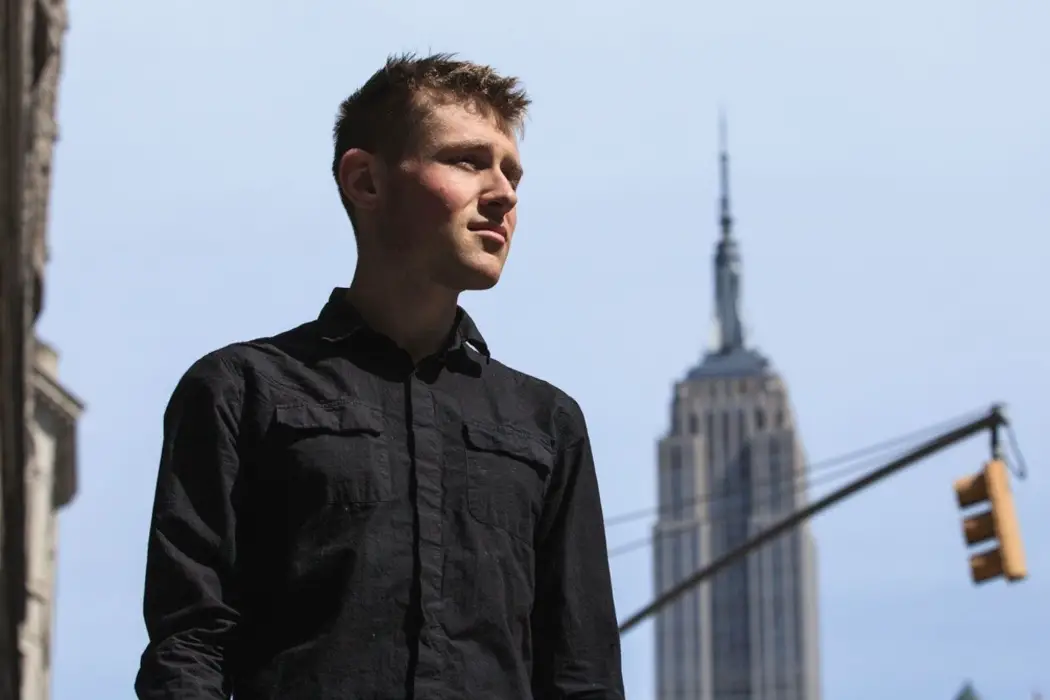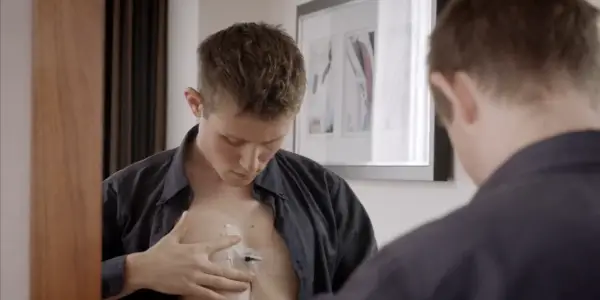UNDERCOVER IN THE ALT-RIGHT: A Harrowing Insight Into The Run Up To Charlottesville

All articles contributed by people outside of our team are…
I’ve seen a fair few horror films over the past year, both new and old. From the grossly tactile gore effects in the Nightmare On Elm Street Series and Midsommar to the more psychological terrors present in movies like Us and Hereditary. Some of this creeped me out or produced a reaction in me at the time, perhaps even for a few hours after I left the cinema, but none truly affected me in a way that would stay with me for too long after.
Patrik Hermansson’s documentary Undercover In The Alt-Right does not technically fall into the horror genre, but its presentation of a growing, increasingly mainstream hatred has disturbed me more than anything fiction could offer.
Hermansson’s Journey
Based on what I saw in the slight 52-minute documentary, I’ve come to the conclusion that Hermansson is one of the bravest individuals I’ve ever seen onscreen. A Swedish student with a long-standing interest in anti-fascism, he came into contact with the British organization Hope Not Hate in 2015, and what began as an investigation into the extreme right-wing ‘London Forum’ became a full-on infiltration of what was evolving into the ‘alt-right’ as we know it today. Through the fish-eye lens of a tiny camera that rests in Hermansson’s shirt buttonhole, that fittingly distorts the seemingly respectable faces surrounding it, we are made privy to the inner workings of some of the biggest names in modern white supremacy – the fact that so many are armed making the whole project a genuine danger to Hermansson’s life if he was caught.

The Intersection Of Hatred
Of course, the alt-right are primarily known for their racism and islamophobia, but it is the intersection of their hatred that seems to have made them so pervasive and dangerous. Any kind of deviation from the white, European, gender-conforming model that they slavishly abide to is seen as an aberration, a monstrous development that stands as the sole threat to those who lay within the group. If you don’t have a job, it’s the fault of the immigrants. If you can’t get a girlfriend, it’s the fault of women. If you are criticized for aggressively asserting your masculinity, it’s the fault of the LGBT+ community. Through this multi-tiered “us and them” dichotomy, no one with the “correct” identity is culpable – an easy solution to complex problems that are placed unjustly onto a vulnerable scapegoat. From antisemitism to a genuine desire to destroy the entirety of the middle-east through nuclear war, each individual interviewed displays a variety of prejudices, unsurprisingly revealing that the unifying belief in their ideology is hatred.
Sanctuary In Irony
In contextualizing the recent growth of this hate movement, Undercover In The Alt-Right puts forward the idea that the internet is what has allowed fringe groups of disturbed, ignorant individuals to become an organised whole under the ‘alt-right’ umbrella. But along with this, a fresher, more intriguing point is made: the role that ‘meme-culture’ has in recruiting disenfranchised young men to a group where they can be part of an ‘in’ crowd. The main example they chose, Pepe the Frog, was especially interesting to me; I recall finding the meme funny back in 2015 before it was truly co-opted as a right-wing signifier, and getting the same kind of ‘in joke’ delight from it that I did from other similar images on the internet. But the way this meme was utilized to present bigoted, violent imagery in a consequence-free environment is a key example of how people on the internet can fall down this rabbit hole without even realizing – how can it be truly dangerous, racist, misogynist, etc., if it’s just a joke?

Hope
When the inevitable scene addressing Heather Heyer’s murder arrived, showing shots of a car coldly and systemically mowing down protestors in an act of absolute cruelty, my blood ran cold. Hermansson’s proximity to this event, and our knowledge that he does in fact stand for those being brutalized, both captures the horror of the moment and perfectly encapsulates the human cost of the movement. As much as they try to dress it up with words like ‘supremacy’, ‘purity’ and ‘ethnonationalism’, this scene of the documentary exposes how these are synonymous with violence, vitriol, and a complete lack of empathy or understanding.
But laying bare that their refined exterior only exists to veil the racist, misogynist bloodlust lurking underneath is key to ending the progress of the alt-right. If you are politically unaware, and all you see of this group is suit-wearing young men engaging with formal dinners and ‘civil’ debates, you may be inclined to see the veneer of their worldview as valid. By removing this gloss, Undercover In The Alt-Right has the potential to lead people more actively onto the side of peace, acceptance, and compassion, and away from the aestheticized cruelty of the far right.
Conclusion: Undercover In The Alt-Right
As one of the most challenging and disturbing films I’ve seen all year, I can’t promote Undercover In The Alt-Right as anything other than essential viewing. In the words of the late Heather Heyer’s cover photo on Facebook, ‘if you’re not outraged, you’re not paying attention’ – as a call to attention, this film is vital, and is incredibly effective in highlighting both the horrors that will arise if these people are left to their own devices, and the tools at our disposal to prevent the violence they want to incite. Hope Not Hate are unquestionably important in this fight, and this movie is an invaluable rallying cry.
What do you think? Did the documentary provide you with any new insights about this extreme group? Let me know in the comments!
Undercover In The Alt-Right premiered in the UK through Hope Not Hate on July 23, 2019.
Does content like this matter to you?
Become a Member and support film journalism. Unlock access to all of Film Inquiry`s great articles. Join a community of like-minded readers who are passionate about cinema - get access to our private members Network, give back to independent filmmakers, and more.
All articles contributed by people outside of our team are published through our editorial staff account.













